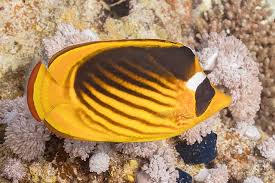Exploring the Educational Value of White Cats in Fostering Interaction and Learning

White cats, with their graceful demeanor and inquisitive nature, serve as engaging companions that can contribute to the accumulation of animal knowledge. In this article, we delve into the unique role of white cats in fostering interaction and learning, making them not only beloved pets but also valuable educators in the world of animal knowledge.
**1. *Observational Learning with White Cats*
Key Point: White cats, through their observable behaviors and interactions, offer opportunities for individuals, especially children, to learn about animal behavior and communication.
Highlights:
- Body Language: White cats, like all cats, communicate through body language. Observing their tail movements, ear positions, and facial expressions can help individuals understand feline communication cues.
- Playful Interactions: Engaging in play with a white cat allows individuals to witness and comprehend the various ways cats express themselves. Understanding play behavior enhances knowledge about feline instincts and social dynamics.
**2. *Responsibility and Care Lessons*
Key Point: Caring for a white cat provides valuable lessons in responsibility, empathy, and the basic needs of animals.
Highlights:
- Feeding and Grooming: Taking responsibility for feeding and grooming a white cat instills a sense of routine and care. It teaches individuals about the importance of meeting a pet’s nutritional and grooming needs.
- Routine Veterinary Care: Regular vet visits for vaccinations and check-ups educate individuals about the essential aspects of preventive healthcare for cats, promoting a sense of responsibility for their well-being.
**3. *Encouraging Curiosity and Inquiry*
Key Point: White cats, with their curious nature, encourage individuals to ask questions, seek answers, and explore the broader world of animals.
Highlights:
- Research Opportunities: Individuals often find themselves naturally inclined to research and learn more about white cats, their specific breeds, and the history behind their unique characteristics.
- Encouraging Curiosity: A white cat’s playful antics and inquisitive behavior inspire questions about feline behavior, biology, and the broader realm of animal science.
**4. *Promoting Compassion and Understanding*
Key Point: The companionship of a white cat fosters empathy, compassion, and a deeper understanding of the needs and emotions of animals.
Highlights:
- Empathy Development: Interacting with a white cat teaches individuals to recognize and respond to the emotional cues of animals, promoting empathy and kindness.
- Understanding Cat Personalities: White cats, like any other cats, have unique personalities. Recognizing and respecting these individual traits contributes to a greater understanding of animal behavior.
**5. *Therapeutic Benefits of White Cats*
Key Point: White cats, with their calming presence, offer therapeutic benefits that can contribute to stress reduction and overall well-being.
Highlights:
- Stress Relief: Interacting with a white cat has been shown to reduce stress and anxiety levels. This experience introduces individuals to the concept of animal-assisted therapy and the positive impact of pets on mental health.
- Bonding and Trust: Building a strong bond with a white cat fosters trust and a sense of security, providing valuable lessons in emotional connections with animals.
**6. *Educational Outreach Programs with White Cats*
Key Point: White cats can be featured in educational outreach programs, promoting responsible pet ownership and disseminating knowledge about feline care.
Highlights:
- School Programs: Incorporating white cats into educational programs in schools can be a hands-on way to teach children about pet care, animal welfare, and the responsibilities associated with having a feline companion.
- Community Workshops: Hosting community workshops or seminars featuring white cats as educational ambassadors helps disseminate information about cat breeds, behavior, and health.
Conclusion: White Cats as Educational Companions
In conclusion, white cats contribute significantly to the accumulation of animal knowledge by fostering interaction and learning. Whether through observational learning, lessons in responsibility and care, promoting curiosity, encouraging compassion, providing therapeutic benefits, or participating in educational outreach programs, white cats play a multifaceted role as educational companions. By embracing the knowledge-sharing potential of white cats, individuals can not only enjoy the delightful companionship of these elegant felines but also gain valuable insights into the world of animal behavior, care, and welfare.









